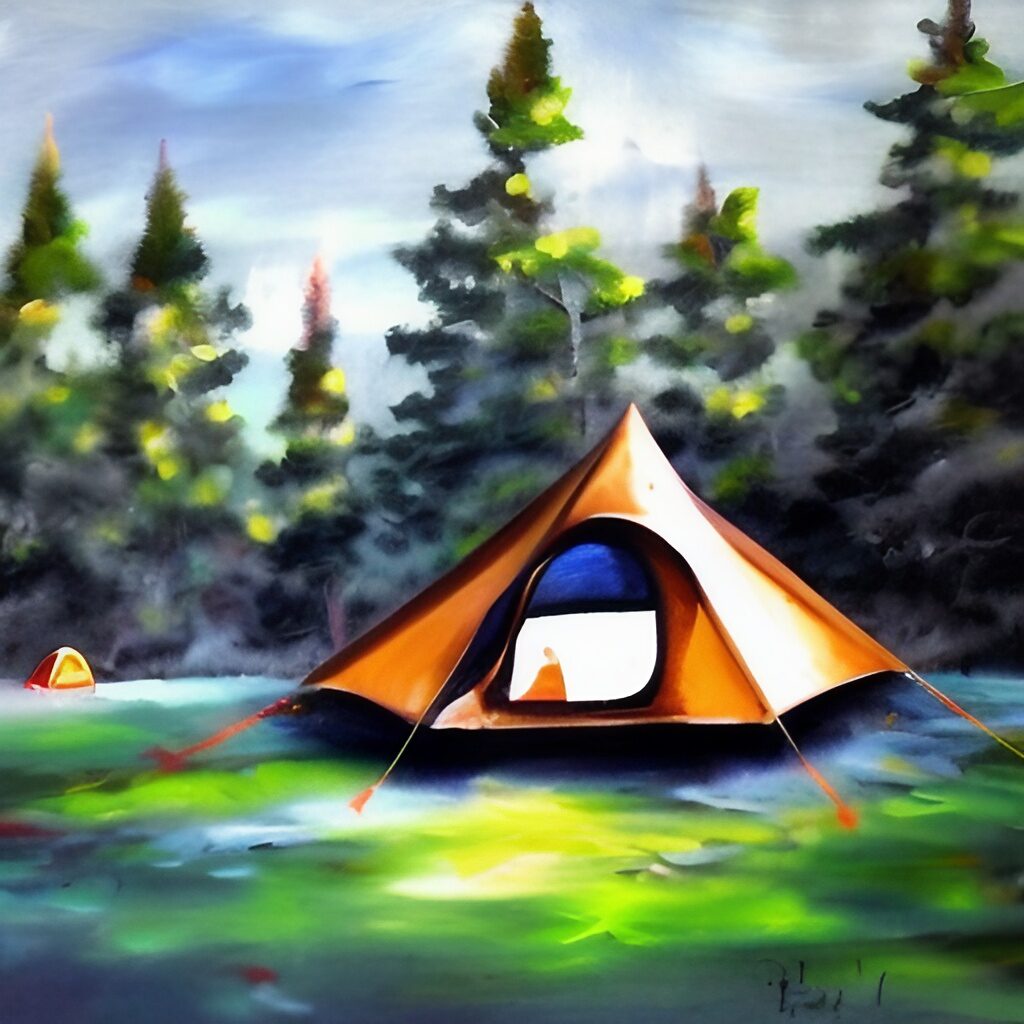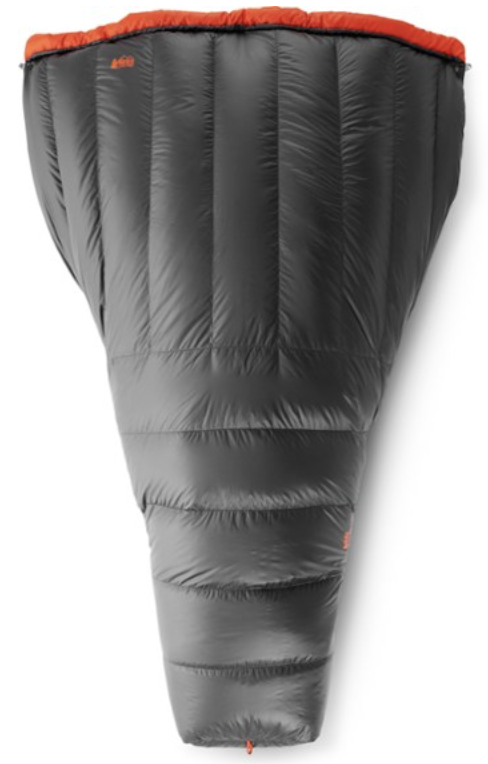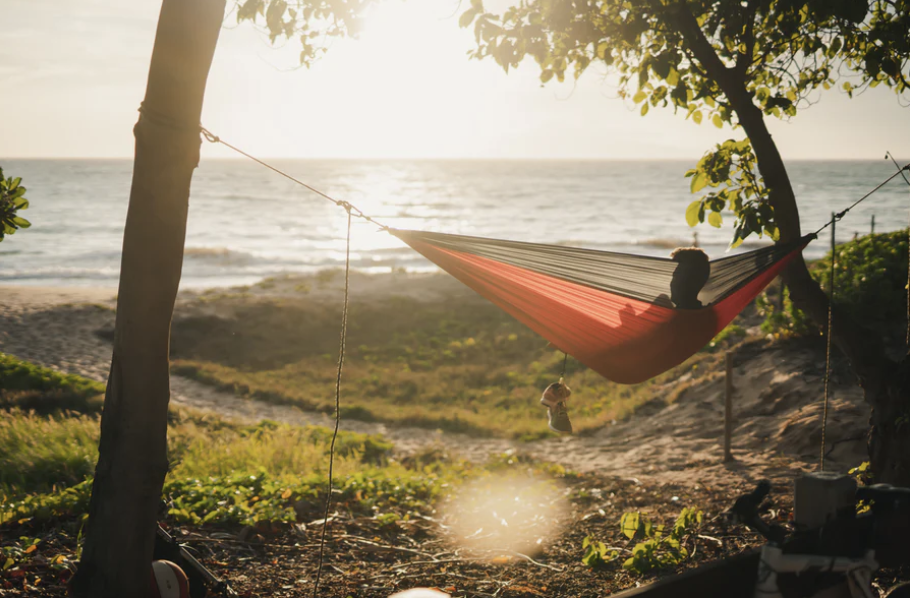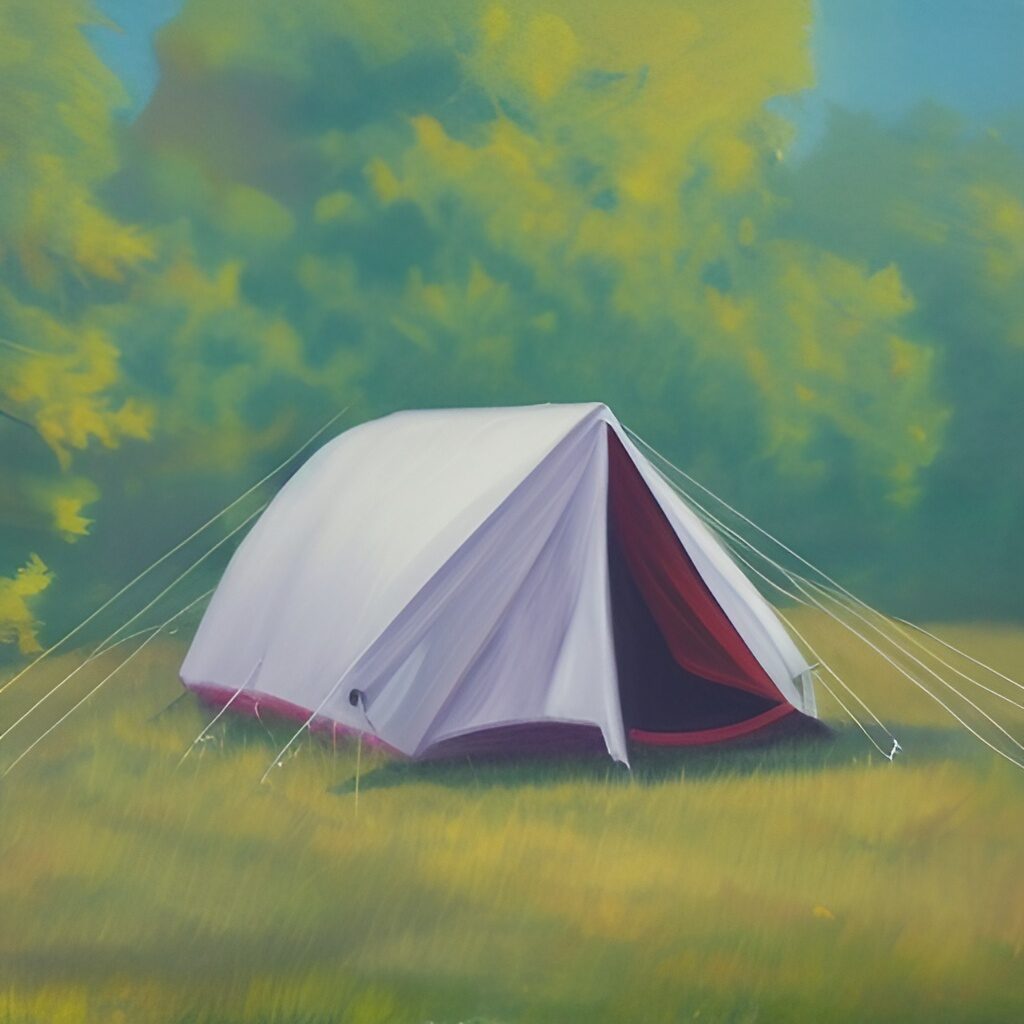
When camping, you’re probably exploring, trekking, and having fun. Expending all that energy makes the rejuvenation of a proper night’s sleep doubly important.
Some campers tell horror stories of sleeping bags feeling restricting, sweaty, and downright awful.
To fix this, our team spent 10+ hours examining sleeping bag alternatives. Combining this research with our personal experience, we hope to find a solution so you can get the best sleep possible.
We concluded that the camping quilt is among the best sleeping bag alternatives. These have essentially removed the inconveniences of a sleeping bag while retaining their better assets.
Additionally, a hammock is a great sleeping bag alternative for those who simply hate sleeping on the ground or people with existing back conditions.
Finally, for those minimalists or long-distance hikers, a bivy sack is an extremely appealing choice to cut down on as much weight as possible.
A Quick Comparison – 12 Sleeping Bag Alternatives
| Sleeping Style | Weight/Portability | Overall Comfort | Price | |
| Camping Quilt | Suitable for all | Very High | Very High | $$-$$$ |
| Camping Blanket | Suitable for all | High | Very High | $$ |
| Regular Blanket | Suitable for all | Medium | High | $ |
| Bivy Sack | Back sleeper | Very High | Medium | $$-$$$ |
| Hammock | Back sleeper | High | High | $$ |
| Tarp | Suitable for all | Medium | Low | $ |
| Emergency Blanket | Suitable for all | Very High | Low | $ |
| Heavy Clothes | Suitable for all | Medium | Medium | $ |
| Woobie | Suitable for all | Medium | Medium | $ |
| Sleeping Bag Liner | Back sleeper | Very High | Low | $$ |
| Leaf Mattress | Suitable for all | Very High | Low | $ |
- A Quick Comparison – 12 Sleeping Bag Alternatives
- Why You May Consider Sleeping Bag Alternatives – 12 Sleeping Bag Alternatives
- What to Look For in a Sleeping Bag Alternative – 12 Sleeping Bag Alternatives
- 1. Camping Quilt – 12 Sleeping Bag Alternatives
- 2. Camping Blanket – 12 Sleeping Bag Alternatives
- 3. Regular Blankets – 12 Sleeping Bag Alternatives
- 4. Bivy Sacks – 12 Sleeping Bag Alternatives
- 5. Hammock – 12 Sleeping Bag Alternatives
- 6. Backcountry Bed – 12 Sleeping Bag Alternatives
- 7. Tarp – 12 Sleeping Bag Alternatives
- 8. Emergency/Space Blanket – 12 Sleeping Bag Alternatives
- 9. Heavy Clothes – 12 Sleeping Bag Alternatives
- 10. Woobie – 12 Sleeping Bag Alternatives
- 11. Sleeping Bag Liner – 12 Sleeping Bag Alternatives
- 12. Leaf Mattress – 12 Sleeping Bag Alternatives
- Conclusion – 12 Sleeping Bag Alternatives
- Frequently Asked Questions – 12 Sleeping Bag Alternatives
Why You May Consider Sleeping Bag Alternatives – 12 Sleeping Bag Alternatives
There are a few areas where sleeping bags can fall short:
Condensation – Why You May Consider Sleeping Bag Alternatives
It can get really muggy and hot inside a sleeping bag. This is thanks to our bodies constantly emitting water vapor when we breathe. And, of course, we generate heat.
Add in the fact that we’re encased in a heavy fabric tube, which becomes a prime recipe for sweaty, humid, sleepless conditions.
Sometimes, sleeping bags are equipped with full-length zippers. If you leave this unzipped, condensation has less chance of building up.
But you also let in the draft if it’s a colder night. Even worse, a lot of bags don’t have full-length zippers.
Portability – Why You May Consider Sleeping Bag Alternatives
Sleeping bags tend to be on the heavier side.
This likely won’t matter to those of you who car camp. But for those long-distance hikers and ultra-lighters out there, every pound counts.
Not only that, but sleeping bags don’t always “pack down” very small. This means a sleeping bag in its sack will still be a larger object, taking up precious space in a backpack.
Restricted Movement – Why You May Consider Sleeping Bag Alternatives
Have you ever woken up in the middle of the night tangled up in your sleeping bag? If so, you know what I mean when I mention how sleeping bags can restrict movement.
The lighter-weight sleeping bags that are better for backpacking achieve their weight by cutting material. What you end up with are the famous “mummy-shaped” bags.
These bags are basically cocoons that keep you warm and reduce excess material. But they can feel pretty tight and uncomfortable.
And sleeping bags can feel downright constricting for those who naturally sprawl when they sleep.
What to Look For in a Sleeping Bag Alternative – 12 Sleeping Bag Alternatives
So you’re thinking of switching from a sleeping bag into…well, what exactly? And how do you begin figuring out which alternative is best for you?
Let’s take a look at some criteria before making the leap.
Personal Sleep Preferences and Style – What to Look For in a Sleeping Bag Alternative
How do you like to sleep? Do you tend to lay still and flat on your back for much of the night? Or do you find yourself tossing and turning or prone to spreading out?
The answers to these questions will help you eliminate certain options immediately.
For instance, maybe you fidget around a lot before settling down. In that case, something like a minimalist bivy bag – which can be claustrophobic – wouldn’t be the best choice.
Insulation and Comfort – What to Look For in a Sleeping Bag Alternative
Aside from your preferences and sleep style, insulation and comfort are critically important factors when choosing a sleeping bag alternative.
A quick way to find the bag’s insulation is to check its temperature rating.
This is often printed on the side of the bag’s packaging. It will say things like 50 degrees for a lightweight summer bag. Or 20 degrees for a bag to keep you warm through cold winter camping.
Portability – What to Look For in a Sleeping Bag Alternative
As mentioned before, a lack of portability can be a strong reason to ditch a sleeping bag. So it makes sense to consider how heavy and portable a sleeping option you’re willing to carry.
Some options we’ll list here can weigh as little as 6 oz or less!
Consider how small you want your sleeping bag alternative to packing down to. This dimension will be clearly noted, likely in inches on the product spec sheet.
The packed size won’t matter as much if you’re car camping or going on an overnight hike. But if you’re setting out on a thru-hike, the space in your pack becomes a precious commodity for other things like food.
Also, remember that the lower you go in weight, the higher you might go in price. This would be true in an ultralight camping quilt such as Therm-A-Rest’s Vesper Quilt.
That’s not always the case, though. You can certainly get an ultralight and inexpensive solution, like MSR’s E-Bivy at a reasonable price.
But keep in mind that even though it checks the “price” and “weight” boxes, you will lose out on comfort, as this will be a minimalist, stripped-down sleeping option.
All that said let’s get into the sleeping bag alternatives.
1. Camping Quilt – 12 Sleeping Bag Alternatives

Camping quilts have earned quite a solid reputation among the camping community.
They offer many of the same benefits as a traditional sleeping bag, such as insulation, plush comfort, and warmth.
Yet they do this at a significantly lesser weight – most quilts weigh around 1lb. They pack down smaller than a sleeping bag too.
Camping quilts save weight and size by removing the hood and the back.
The back!?
Yep! There are no backs to camping quilts, which, as you can imagine, is a significant amount of unneeded fabric and stuffing.
It really isn’t as scary (and as cold!) as that sounds. You see, camping quilts are designed to be used with a sleeping pad.
As such, the sleeping pad keeps your back insulated from the colder ground temperatures.
In this way, camping quilts have effectively eliminated a quarter of a sleeping bag while maintaining all the good things about sleeping bags. Awesome!
If you’re still a little skeptical, that’s okay. I was, too, until I actually started reading about these things.
While it’s true that you could feasibly let in a draft while you toss and turn at night, all you’d need to do is tuck the quilt back under. Or you could wear slightly warmer clothes.
Because a camping quilt has no back, you can toss, turn, or dangle a leg out of the side.
But what about people who can’t stand any confinement, even the minimal sides of a camping quilt?
Well, some campers have also pointed out that you can simply unzip the foot box area to make the camping quilt into…well, just a regular, oversized blanket. So having this option feels rather liberating.
Camping quilts are very well insulated; users have reported getting a warm, well-rested night. But not overly warm since they can simply air out the interior by sticking an arm or leg out to allow some fresh airflow.
Overall, camping quilts are an astoundingly solid choice for anyone who wants to keep all the good aspects of a sleeping bag while doing away with all the negative aspects.
Pros – Camping Quilt
- Not restrictive.
- Flexible: can convert into a regular blanket.
- Weighs less/is smaller than a sleeping bag.
- No annoying zippers or velcro!
Cons – Camping Quilt
- Mid-high-level price range.
- No hood means you could be cold if cold-weather camping (bring a hat).
2. Camping Blanket – 12 Sleeping Bag Alternatives
Although they sound similar, camping quilts and camping blankets are not the same things.
The biggest difference is that camping quilts wrap three-quarters of the way around you. They encase you fully, except for the back.
Camping blankets, meanwhile, are just that: rectangular-shaped blankets. Unless you get an oversized one, you can’t really wrap yourself up in it properly. Thus, your sides could be cold if it’s a chillier night.
Some camping blankets are insulated, with synthetic outer coverings and inner filling. These blankets are also packable, stuffing down into small-ish sacks around a foot tall.
However, when searching for a camping blanket, remember that many manufacturers can stick the label “camping blanket” onto anything. This goes for blankets made of wool, cotton, or other similarly unsuitable fabrics. So just be aware of what you’re actually looking for.
Pros – Camping Blanket
- Best for summer camping, 50-60 degree nights.
- Less fabric means less weight.
Cons – Camping Blanket
- Too cold for most other styles of camping.
- Can’t wrap up in it.
3. Regular Blankets – 12 Sleeping Bag Alternatives
Unlike camping blankets, which we mentioned, regular ones aren’t designed specifically for camping. This means they may not be as good at heat retention or condensation control. Even more notable: they’ll be heavier.
Using this method is really more for car camping. Specifically, it’s good for use with a cot or a sleeping pad. Perhaps even an airbed if you have one.
Regular blankets are bulky. In fact, they’ll likely weigh similarly to regular sleeping bags. So if weight is your prime reason for switching, think again.
On the other hand, if budget and convenience are your prime reasons, blankets may do the trick.
Pros – Regular Blankets
- Convenient – use what you have at home.
- Great for car camping on a comfy air mattress where you’re off the ground.
Cons – Regular Blankets
- Unless you bring several, they might not be as insulated as a sleeping bag or other options on our list.
- Could get heavy quickly.
4. Bivy Sacks – 12 Sleeping Bag Alternatives
You may have encountered bivy sacks by other names. Their full name is “bivouac, ” meaning “a temporary camp without tents or cover.” They’re also known as bivy bags or bivys.
Bivy sacks are one of the ultimate and minimalist solutions for ultralight hikers. In fact, they can weigh as little as 6 oz.
Clearly, bivys are far more lightweight than sleeping bags and pack down much smaller, some not much bigger than a burrito (yes, the kind you eat!).
They can help shed so much weight, in fact, that bivy users can forgo not just a sleeping bag but a tent as well.
So bivy sacks get you closer to nature than you’d ever get in a tent.
Dedicated bivy users eloquently wax how the starry views – unobstructed by tent walls – are extra magical. Or how they have an enhanced sense of the vastness of the mountains, they camp beside.
Anyway, let’s get to the nitty-gritty.
To use a bivy sack, lay down your sleeping pad, lay the bivy on top, and crawl inside.
Ta-da! Nothing but you, your face peeking out of the breathing hole, and the great outdoors.
Some campers advise placing your sleeping pad inside the bag as a life pro tip. This prevents sliding or accidentally rolling off the pad at night. Ouch!
If this sounds too minimal for you, there are also bivy shelters. These are essentially bivy bags but with an arched frame at the head to provide a little headroom and minimize claustrophobia.
The extra space, of course, comes with a bit more weight. It’s only 1-2 extra pounds, but this may or may not matter, depending on your dedication to ultralight.
Although bivy bags can maintain warmth, they are obviously not the top performer.
Can you be surprised? It’s basically a plastic bag. Thus, these are mostly for summer camping.
Pros – Bivy Sacks
- Super lightweight.
- You can cut out both a sleeping bag and a tent.
- Provides ultimate “under the stars experience.”
Cons – Bivy Sacks
- Can feel too constrictive.
- Hyper minimalist.
5. Hammock – 12 Sleeping Bag Alternatives

A hammock is a nice option for those seeking a middle ground between hyper-minimal bivy and the perhaps over-excessive space of a tent.
You’re still in a relatively narrow space, but you can move around and spread out more than in a bivy.
Plus, most hammocks have a zippered mesh top to keep out the bugs. It becomes your own private cocoon!
They’re also perfect for anyone with back issues because they get you completely off the ground. I sometimes hurt sleeping on the ground, and I don’t have back problems. The ground is really hard, even with sleeping bags/pads!
As a final plus, they’re really lightweight and packable. ENO’s JungleNest hammock, for instance, weighs only 1lb.
And similar to bivys, hammocks can substitute your sleeping bag and your entire tent.
So that’s a lot of positives, but here are some caveats.
Just because you’re off the cold ground doesn’t mean you can forget about insulation.
I’ve slept in these things before, and I can confirm I made the mistake of not bothering with any padding. Boy, was I a cold puppy come 3 am.
To fix this, you could either bring your existing sleeping pad and throw it in the hammock under you.
Or you could buy a hammock that’s sold with insulation/a sleeping pad built in. Just remember that it will cost more than a standard hammock.
Either way, don’t skip this step!
Another thing that is pretty obvious: you need trees to hang up a hammock. So a hammock will be useless if you’re camping in the desert.
You’d also better have good knot-tying skills. You don’t need to be a sailor, but you should have a basic understanding of which knots hold best – and be able to tie them.
Otherwise, you could end up like my dad, who woke up on the ground because his hammock’s knots were insufficient.
Pros – Hammock
- Lightweight.
- Hanging means it’s easier on your back.
- Can replace your sleeping bag and your tent.
Cons – Hammock
- Some say they’re a little restrictive still, or they don’t like the hanging sensation.
- Needs trees.
- Needs knot tying skills.
6. Backcountry Bed – 12 Sleeping Bag Alternatives
Backcountry beds are extremely similar to sleeping bags. Indeed, at first glance, they look almost exactly alike.
So what’s the difference, and why is it even on our list?
Backcountry beds are roomier than sleeping bags. Thanks to that, they won’t feel nearly as restrictive.
They also don’t have zippers, which is a plus. Now you don’t have to deal with jingly or stuck zippers.
Another awesome perk is that backcountry beds have a comforter quilt built into them.
Now you won’t need to bring an extra blanket. Plus, the quilt can be flipped inside out on warmer nights and placed under the bed for extra insulation.
Aside from a sleeping pad, backcountry beds are essentially your all-in-one solution.
They’re a good fit for someone looking to escape a sleeping bag’s constraint but who might not be ready to jump to a completely different system.
Pros – Backcountry Bed
- Similar perks to a sleeping bag – warm, fluffy, comfy.
- Roomier.
- Integrated quilt so you don’t have to carry two pieces of kit.
- It often features little pockets for arms/hands; on warm nights.
- A quilt can be turned inside out and used as insulation if you don’t have a good pad.
Cons – Backcountry Bed
- Heavy/bulky.
- It may be too similar to sleeping bags for some.
- Pricey.
7. Tarp – 12 Sleeping Bag Alternatives
A tarp is another ultralight option that provides versatility and sleeping options.
For instance, tarps can be used with a bivy or a hammock for a more “tent-like” feel.
Or you can be really hardcore and simply spread the tarp on the ground. As with most of our sleeping bag alternatives, we strongly advise a sleeping pad for added padding and insulation.
Actually, to put it bluntly, tarps are terrible at insulation.
So not only do you need a sleeping pad, but we’d advise that you have one rated to handle the temperatures you’ll be camping in.
Pros – Tarp
- Good for ultralight hikers.
- Offers more space/options than a bivy sack.
- It can be used in conjunction with a bivy.
Cons – Tarp
- It might still be too minimalist for some.
- Poor insulation – make sure you have a good quality sleeping pad.
8. Emergency/Space Blanket – 12 Sleeping Bag Alternatives
Emergency blankets, sometimes called space blankets, are greatly underrated equipment.
They get tucked away “for emergency use only” when they can be a regular addition to a sleeping set.
They’re made of a special foil that feels tissue-paper-thin but is extremely thermally insulating. This is why they’re designated for emergencies: they keep you so warm that they can help prevent hypothermia.
Like bivy sacks and sleeping bag liners, emergency blankets are one of the lightest weight options so far. This makes them an appealing choice for a thru-hiker.
Use an emergency blanket in combination with a sleeping pad. You lay on the pad and then place the blanket over you like a regular blanket.
Just be careful when crawling inside it or wrapping it all the way up. I made the mistake of doing that once and woke up sweaty because it insulated me well.
Pros – Emergency/Space Blanket
- Ultralight.
- Very warm; can be used alone or with a bivy or sleeping pad.
Cons – Emergency/Space Blanket
- It has one job: to keep you warm. So it’s not the best for breathability unless you use it in specific ways.
9. Heavy Clothes – 12 Sleeping Bag Alternatives
For those of you that are 200% done with any sort of sleep system that encases you, ditch them and pack some warm clothes!
We suggest a pair of insulating/thermal long underwear and thick socks for your first layer. Then don a pair of leggings and a shirt. Over that, wear a hoodie (or two), plus a pair of roomy pants (preferably ones with a shell to help with heat retention) and a hat.
This method is only advisable for the summer when it won’t get too cold. And still, you want to anticipate temperatures in the low 50’s, depending on where you camp. Trust me: at 4 am, it gets pretty chilly.
As a last note, avoid wearing anything made of cotton. It’s terrible for moisture wicking, meaning if you sweat, you’ll lay around in it all night.
Instead, bring camping clothes. These are made of special synthetic fabrics which are breathable, moisture-wicking, and insulating. Cool right?
Pros – Heavy Clothes
- Convenient – no extra kit parts or costs.
- Easily customizable – is it warmer than you thought? Then leave that extra hat in your pack.
Cons – Heavy Clothes
- You could end up carrying a similar weight to a sleeping bag.
- Only suitable for summer camping.
10. Woobie – 12 Sleeping Bag Alternatives
Woobies are essentially rain ponchos that are issued to the U.S. military.
Recently, the outdoor community has discovered them as well.
Woobies are basically thermally insulated, water-resistant blankets. They are sold almost exclusively in camouflage patterns, making them great for hunters.
As an added plus, most woobies are surprisingly budget-friendly.
That makes them a more reasonable option for someone who may want the benefits of an insulated sleep kit without the premium price.
Pros – Woobie
- Hardy and durable.
- Lightweight and packable.
- Thermal insulation – Can be used in colder and warmer weather.
- Good in the rain.
Cons – Woobie
- It is not good for extreme conditions; it is still only one blanket, after all.
11. Sleeping Bag Liner – 12 Sleeping Bag Alternatives
Sleeping bag liners are designed to be used with sleeping bags to prevent moisture.
One of the other key appeals to liners is their ability to add 10-15 degrees of extra warmth to a sleeping bag. Used by themselves, they retain some of that ability to insulate.
Of course, since you are basically wrapping yourself into a Ziploc bag, they aren’t suitable for cold-weather camping. Instead, they’re ideal for extremely warm nights.
With a weight of around 5oz, liners are a serious solution for the dedicated minimalist or ultralight packer.
Their weight comes with the obvious trade-off that they may not offer the most comfortable night’s rest.
Like several other options on our list, we’d strongly urge you to use a liner with a sleeping pad for maximum comfort.
Pros – Sleeping Bag Liner
- Ridiculously lightweight, perfect for ultralight packers.
- A good choice for camping in extreme heat.
Cons – Sleeping Bag Liner
- Only suitable for high-temperature camping.
- Not super comfortable.
12. Leaf Mattress – 12 Sleeping Bag Alternatives
A leaf mattress is really only a sleeping bag alternative for two reasons.
One is for emergencies to provide some insulation from the cold ground. The second reason is that you’re simply an extremist or survivalist!
The premise of a leaf mattress is wildly simple. Collect as many leaves (from the ground, not plucked from living trees…) as possible. Then stuff them all into garbage bags.
For top coverage, you have your trusty emergency/space blanket for warmth. ….Right?
Pros – Leaf Mattress
- You don’t have to bring anything with you besides large trash bags.
- The most cost-efficient.
- No transportation.
Cons – Leaf Mattress
- Won’t be very comfortable or warm.
- Suitable for emergencies, not long-term.
Conclusion – 12 Sleeping Bag Alternatives

As you can see, there are more than enough sleeping bag alternatives for any style of camper on any budget.
Out of all of them, the camping quilt is one of the most viable options for almost any style of camper. This is thanks to its versatility, comfort, and warmth.
A runner-up is a hammock for those who prefer being suspended from the ground instead of lying on it.
Lastly, the bivy sack is extremely popular for minimalists, ultralight packers, and long-distance hikers. They are prized for their no-frills nature, especially considering they offer enough protection to replace a tent and a sleeping bag.
Overall, we hope this guide has been helpful and enlightening to you in your search for an alternative to the traditional sleeping bag.
Frequently Asked Questions – 12 Sleeping Bag Alternatives
1. What Alternatives are There to Traditional Sleeping Bags? – FAQs
Camping quilts, hammocks, and bivy sacks are alternatives to traditional sleeping bags.
2. What Distinguishes These Alternatives From Sleeping Bags? – FAQs
Regarding design and function, alternative sleeping gear frequently differs from traditional sleeping bags. Camping quilts, for example, are typically lighter and less constricting than sleeping bags, whereas hammocks offer a different type of sleep system that suspends you off the ground.
3. Is There Any Benefit to Using Something Other Than a Sleeping Bag? – FAQs
Yes, there can be several benefits to using a different sleep system. These may include improved movement comfort or flexibility, reduced weight or bulk for backpacking trips, and improved ventilation in hot weather.
4. What Factors Should I Consider When Selecting a Sleeping Bag Substitute? – FAQs
Consider temperature rating (if applicable), weight and packability for your intended use, comfort level, and personal preferences for sleep position or movement when selecting an alternative sleep system.
5. Can I Take These Alternatives Camping or Backpacking? – FAQs
Yes! Many alternative sleep systems are designed for outdoor adventures such as camping or backpacking.
6. Do These Alternatives Keep You as Warm as Traditional Sleeping Bags? – FAQs
It is determined by the alternative sleep system in use. Depending on the design and materials, some may be warmer than others.
7. Are There Any Disadvantages to Using a Sleeping Bag Substitute? – FAQs
As with any piece of equipment, depending on your needs and preferences, there may be drawbacks. Some people, for example, may find that certain alternative systems do not provide enough warmth in colder temperatures or are not as comfortable as they would like.



















